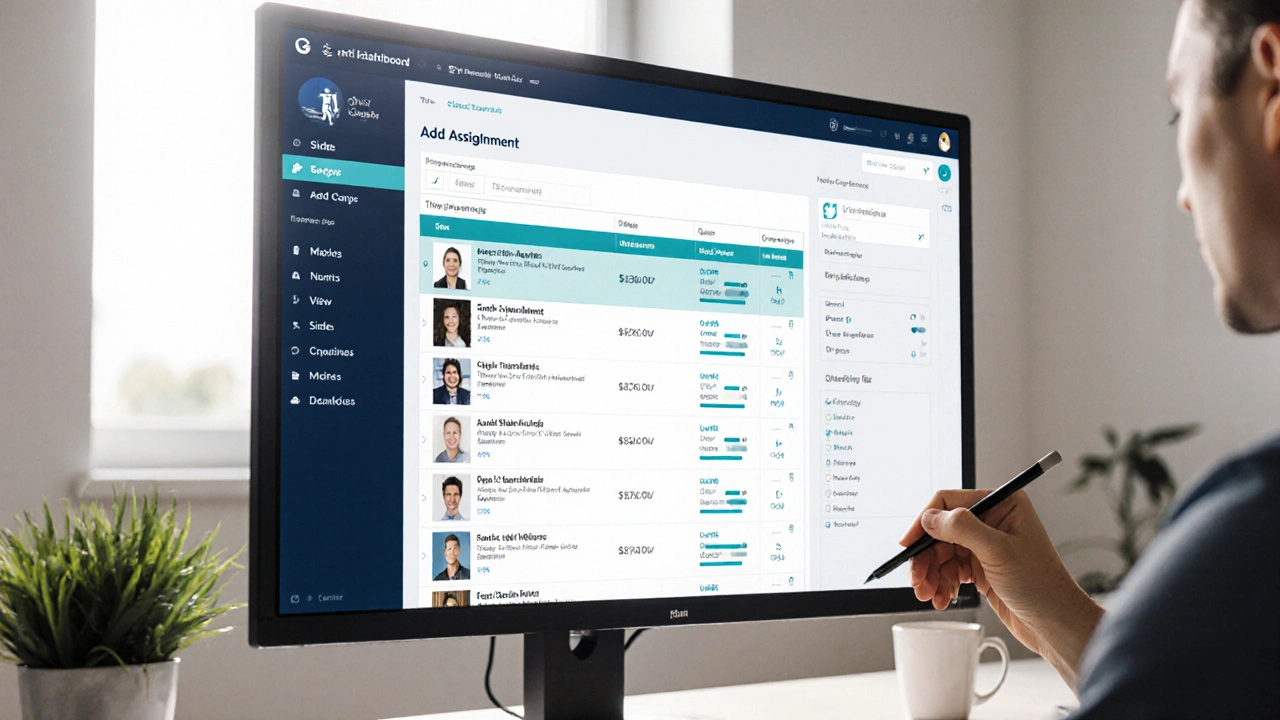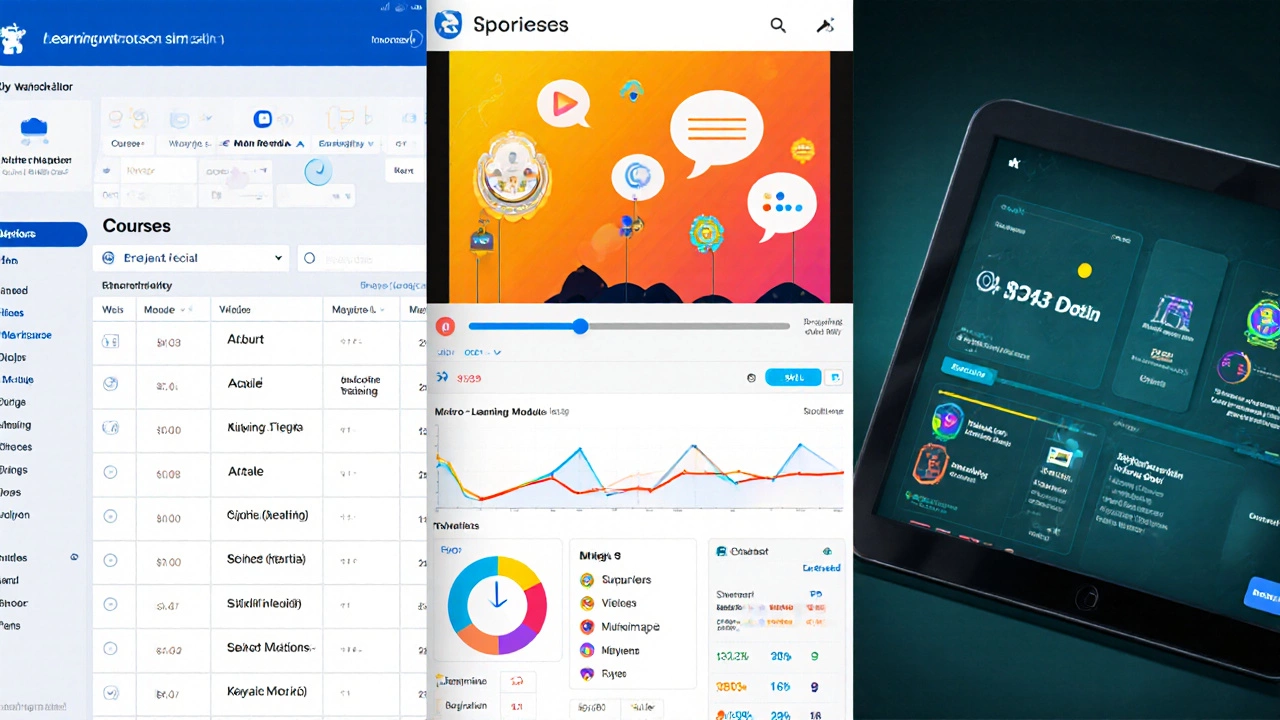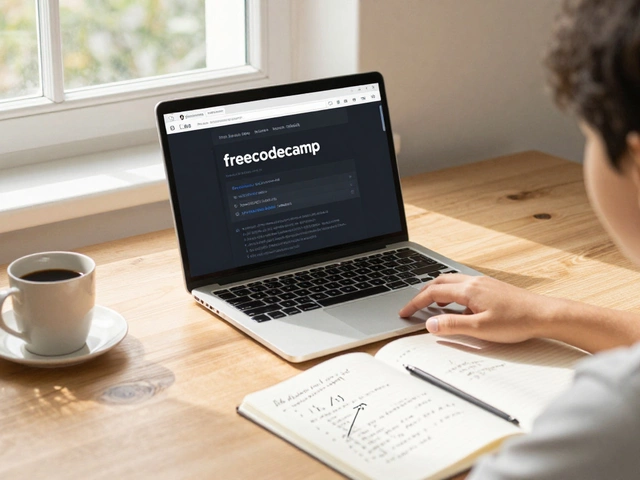E-Learning Platform Selector
Select Your Requirements
Answer these four questions to find your best match among the three e-learning platform types
Key Takeaways
- Online learning platforms fall into three clear categories: Learning Management Systems, MOOC platforms, and corporate training solutions.
- Each type serves a distinct audience and offers unique features for content delivery, engagement, and assessment.
- Choosing the right platform depends on your goals, budget, and the scale of learners you need to support.
- Watch out for hidden costs like licensing, support, and integration fees.
- Future‑proofing means picking a platform that can grow with new tech like AI‑driven personalization.
Ever wonder why some online learning sites feel like a school, while others feel like a Netflix binge? The answer lies in the underlying E‑learning platform is a digital environment that delivers educational content, tracks learner progress, and often incorporates interactive tools. Not all platforms are built the same. In practice, they cluster into three families, each with its own purpose, user base, and tech stack.
1. Learning Management System (LMS)
An Learning Management System (LMS) is a software suite that lets organizations create, deliver, and manage structured courses for groups of learners. Think of it as the digital equivalent of a classroom where a teacher uploads slides, assigns quizzes, and monitors attendance.
- Typical users: schools, universities, corporate training departments.
- Core features: course authoring, enrollment management, progress tracking, certification.
- Popular examples: Moodle, Canvas, Blackboard, TalentLMS.
The LMS model shines when you need tight control over curriculum pathways, compliance reporting, and credentialing. It also integrates well with HR systems, making it a favorite for regulated industries.
2. Massive Open Online Course (MOOC) Platform
A Massive Open Online Course platform is a web‑based service that hosts large‑scale courses open to anyone with an internet connection. Unlike an LMS, a MOOC is designed for high enrollment numbers and often monetizes through certificates or subscriptions.
- Typical users: lifelong learners, professionals seeking up‑skilling, universities looking to expand reach.
- Core features: video streaming, discussion forums, peer‑graded assignments, scalable infrastructure.
- Popular examples: Coursera, edX, FutureLearn, Udacity.
MOOCs thrive on community‑driven learning. They use gamified progress bars, badges, and lots of social interaction to keep millions of learners engaged.

3. Corporate Training Platform
A Corporate training platform is an enterprise‑focused system that delivers job‑specific learning paths, compliance modules, and performance analytics to employees. The emphasis is on aligning learning outcomes with business goals.
- Typical users: large enterprises, mid‑size companies, government agencies.
- Core features: micro‑learning, skill‑gap analysis, integration with LMS for reporting, mobile‑first experience.
- Popular examples: Docebo, SAP SuccessFactors Learning, Cornerstone OnDemand, LearnUpon.
Because the ROI of corporate learning is measured in productivity, these platforms often include AI‑driven recommendations, real‑time analytics, and APIs to pull data into existing ERP systems.
How the Three Types Differ in Practice
| Aspect | LMS | MOOC Platform | Corporate Training Platform |
|---|---|---|---|
| Target audience | Schools, universities, regulated orgs | General public, professional up‑skillers | Employees, enterprise teams |
| Scale | Hundreds to thousands | Thousands to millions | Hundreds to tens of thousands |
| Primary revenue model | License or subscription per institution | Freemium, paid certificates, subscription | Enterprise SaaS contract |
| Assessment style | Quizzes, assignments, graded exams | Peer review, auto‑graded quizzes, capstone projects | Competency tests, compliance checks, skill surveys |
| Integration focus | Student information systems, HRIS | Payment gateways, analytics dashboards | HR suites, CRM, performance management tools |
Notice how each family emphasizes different strengths. If you need strict accreditation tracking, the LMS wins. If you want global reach with video‑first content, the MOOC platform is your go‑to. For aligning learning with business KPIs, the corporate training solution leads the pack.

Choosing the Right Platform for Your Needs
Before you sign up for a demo, ask yourself these four questions:
- Who are my learners? K‑12 students, adult professionals, or internal staff?
- What outcomes matter? Certification, skill acquisition, compliance, or engagement metrics?
- How much can I spend? Consider recurring fees, per‑seat costs, and hidden integration expenses.
- Will the platform grow with me? Look for open APIs, modular architecture, and a roadmap that includes AI‑driven personalization.
Map your answers to the table above, and you’ll see a clear fit.
Common Pitfalls and How to Avoid Them
Even with a perfect match, implementation can trip you up. Here are three frequent mistakes and quick fixes:
- Under‑estimating onboarding time. Allocate at least two weeks for content migration and staff training. Use the platform’s sandbox environment to pilot before a full rollout.
- Ignoring mobile experience. Over 70% of learners access content on phones. Test responsiveness early and choose a platform with native apps.
- Skipping data privacy checks. If you handle EU learners, verify GDPR compliance, especially for MOOC platforms that store personal data in multiple jurisdictions.
Future Trends Shaping All Three Types
Artificial intelligence, immersive reality, and analytics are blurring the lines between LMS, MOOC, and corporate solutions. By 2027, expect:
- AI‑generated micro‑learning nuggets that adapt to a learner’s pace.
- VR labs that let students practice lab work from home.
- Skill‑graph dashboards that feed directly into hiring tools.
Platforms that invest early in these capabilities will stay ahead, regardless of their original classification.
What is the main difference between an LMS and a MOOC platform?
An LMS focuses on structured, institution‑driven courses with tight control over enrollment and certification, while a MOOC platform is built for open, large‑scale courses that anyone can join, often monetized through certificates or subscriptions.
Can a corporate training platform also host public courses?
Some vendors offer a hybrid mode where enterprises can create public‑facing learning paths, but the core design remains geared toward internal skill development and compliance tracking.
How much does a typical LMS cost?
Pricing varies widely. Open‑source options like Moodle are free but need hosting and support, while commercial LMSs charge anywhere from $5 to $20 per user per month, often with tiered discounts for large institutions.
Are MOOCs accredited?
Many MOOCs partner with universities that issue accredited credits, but most single‑course offerings provide only a certificate of completion, which may not count toward formal degrees.
What features should I look for in a corporate training platform?
Key features include micro‑learning delivery, AI‑driven skill recommendations, integration with HRIS/ERP, mobile app support, and robust reporting dashboards that tie learning outcomes to business KPIs.
Understanding the three core types of online platforms helps you cut through marketing hype and pick the solution that truly fits your learning goals. Whether you’re a school administrator, a lifelong learner, or an HR manager, the right e-learning platforms can turn knowledge into measurable results.












